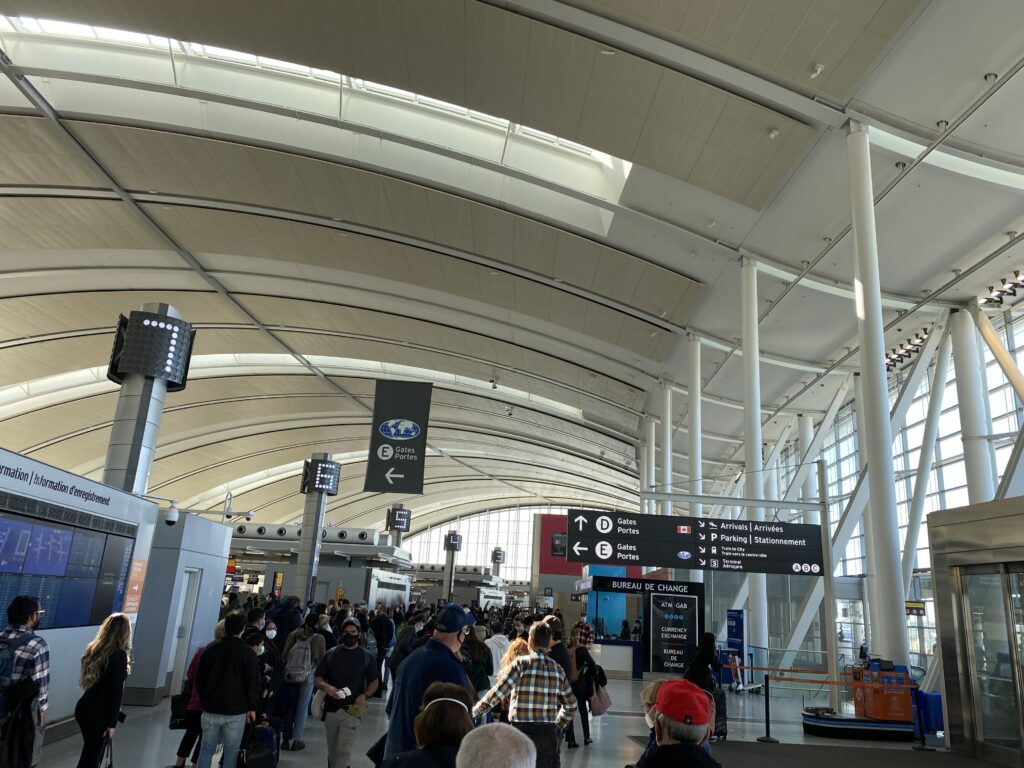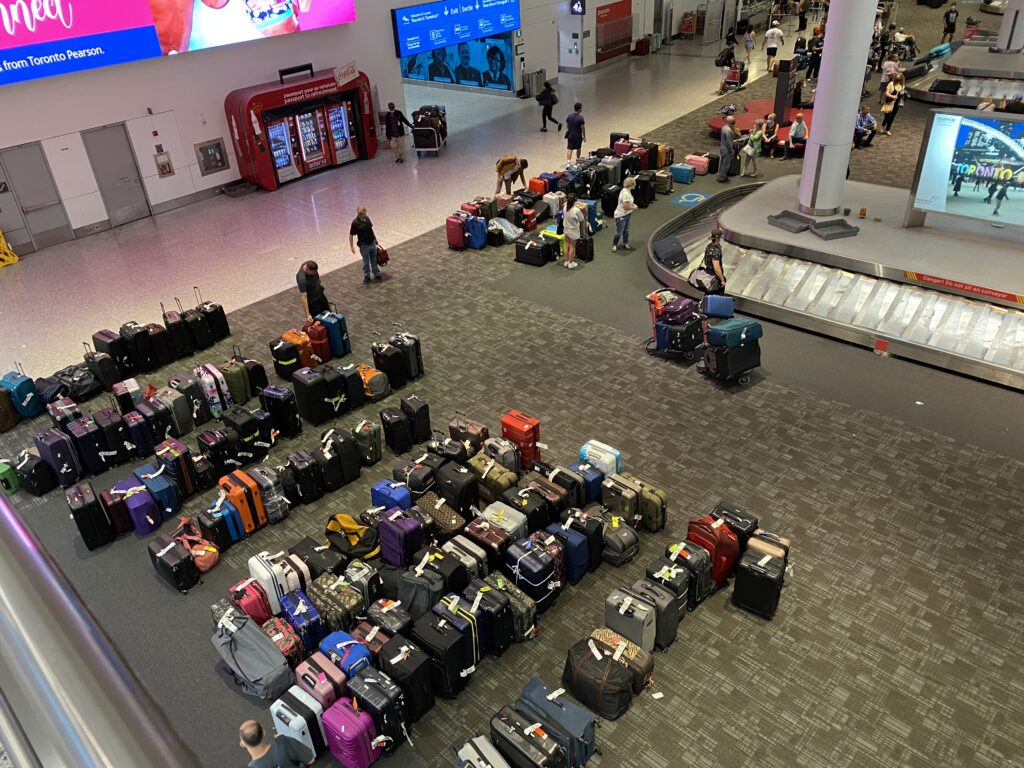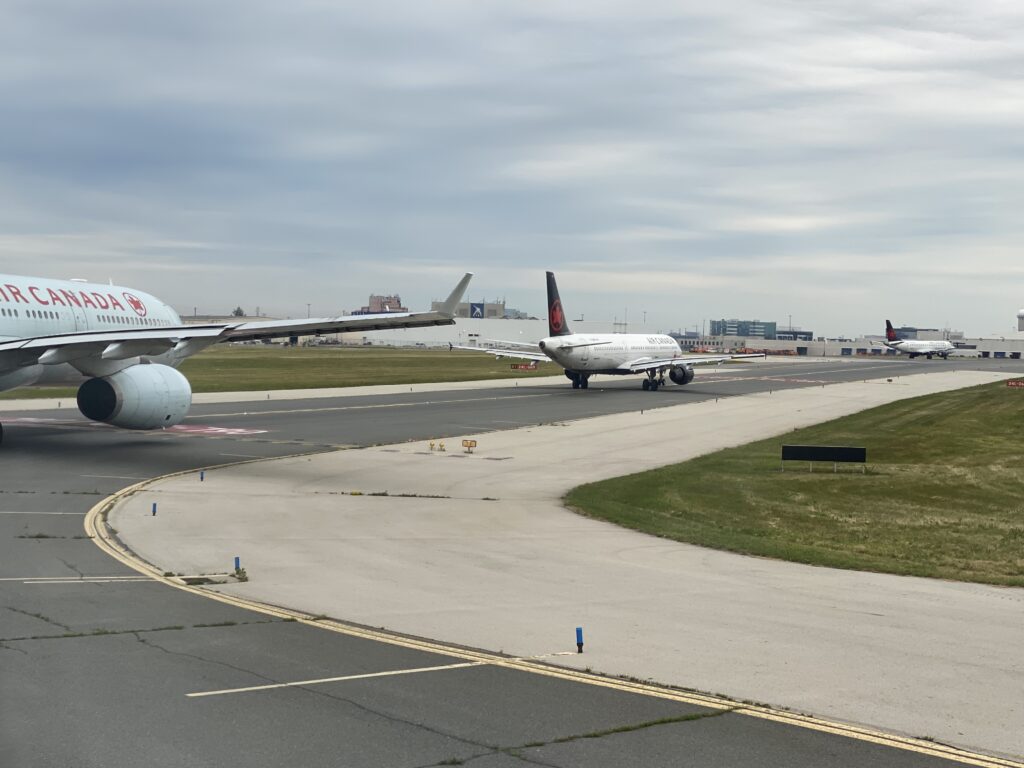“Toronto airport is a total Nightmare” reads the headline of a story highlighting the suffering of individual travelers. The media is full of hundreds of these human-interest stories over the Christmas of 2022, but this headline was from February 2019. Over the years, reporters looking for a quick “if it bleeds, it leads” story need only mine social media or do on the spot interviews with stranded air travelers. Despite these stories, air travel is expected to grow steadily in Canada.
Can the ever-increasing tempo of seasonal air travel foul-ups be reversed?
A busy travel season combining with a winter storm is nothing new for Toronto. Air travel has almost recovered from the effects of Covid and is set for steady free market driven growth for decades to come. Action must be taken by the Federal government, otherwise the woes of travelers will become more intense. In a complex world full of misinformation and conflicting facts, focusing just on individuals involved in the mayhem is easy, but wrong.
Human-interest stories are attractive and relatable to readers as they place the reader in the shoes of someone else at a moment of crisis and can take several approaches. They can range from simply asking a traveler about frustrations over a cancelled flight, about being forced to wait inside a freezing or cooking aircraft, congested airport terminal or packed customs hall.
Flights that are missed, delayed, or cancelled are not just an inconvenience, they can cause life altering events. The bride that misses her own wedding. A missed business meeting causing a canceled contract. A child missing a last chance to hold a dying parent’s hand.

Given that the cost of air travel has become much more affordable for many people, it is accepted that it is no longer a luxury for the few. Air travel is now the lynch pin of modern mobility and our western capitalist economy. For a country the size of Canada, it is the primary mode of long-distance travel for most citizens.

While Torontonians are getting accustomed to hearing heart wrenching tragic stories from air travelers there is another type of human-interest travel story. This is an individual aviation workers view of the “story behind the story”. A glimpse of current events through the eyes of those working in the aviation industry. It overlays the current travel anarchy with an individual’s knowledge and links the current problem with past events, experiences or bad decision making.
Any human-interest story can be biased by an individual’s experience or world views and the preconceptions and/or opinions of the reporter covering it. Human-interest stories are universally acknowledged as tabloid fodder and these stories can be twisted and spun any way a reporter (or in some cases special interest lobbyist or government representative) wishes to present them. But if we are careful, we can see the mistakes of the past and find a path forward into a better future.
Here are some examples:
Ask a pilot or dispatcher working for Porter airlines why staff were forced to suspend flights at Billy Bishop Airport, starting on December 22, 2022, for days and they will point to the airport’s short runway. The main runway is only 3,988 feet long, instead of the 5,000 feet required by a standard ILS (Instrument Landing System) approach.
Additionally, if the runway friction index drops below a set level, even an aircraft designed for short landings such as the Q400 will slide off the end of the runway and into Lake Ontario. The reason the runway is too short and missing the space needed for internationally standard overrun protection, is due to a decision in 2016 by the Federal Transportation Minister to block the privately funded extension of the runway.
Despite the challenging physical conditions, Porter Airlines still has better on time performance than Air Canada.

Ask a ramp worker or Pilot why Pearson Airport’s hourly capacity is cut in half during a snow fall and they may simply point to the local roads and ask why it took you twice as long to drive to the airport. Just as you are forced to drive at reduced speed behind a snowplow or in low visibility so too are aircraft movements impaired by low visibility or the delay caused by snow removal operations on runways and taxiways.
Weather, Airline Company decisions, Airport staff and physical infrastructure can all play a part in reducing capacity. Once capacity is reduced, even for an hour or two, airport management needs to find and provide excess capacity to accommodate the displaced aircraft movements, travelers and their luggage. Without that additional capacity, flights are backed up and become more delayed or are cancelled outright.
A few hours of snow fall, a staff shortage on a Monday morning shift or the break of a luggage belt have all been blamed for backups at Pearson Airport that have lasted days. This lack of capacity is all it takes to make Toronto’s Pearson Airport consistently one of the worst performing airports in North America before the pandemic.
As the demand for travel increases during the holidays Pearson airport staff have a reduced ability to recover, even from small disruptions. As the GTA grows and demand for air travel and cargo flights increase, the ability to recover from disruptions will decrease to the point of grid lock.
So, what is the solution? Only the construction of new aviation capacity can reverse this trend.

New, additional capacity is planned for land set aside and zoned for a new airport in nearby Pickering but so far, the Federal Transportation Minister has refused to give it a green light. The decision to delay the building of a new airport needs to change quickly. The new airport will take years to build, especially if it is expected to be built efficiently with private funding.
Certainly, something needs to be done to reverse the chaos Toronto is experiencing, and the Federal Transportation Minister is the one that can make it happen. But does he want to?
For years, politicians from other regions and cities, including Montreal, Winnipeg and Calgary have been competing for the business and immigrants that are driving Toronto’s growth. Even parts of Ontario, such as London or Ottawa see opportunity in allowing Toronto to choke on its own growth. For some, air travel pandemonium in Toronto is good news despite its harmful effects on travelers, Toronto, and Canada’s economy. Some are also lobbying to redirect the carefully assembled Pickering Airport lands for their own for-profit purposes.
A recent move by the Federal Transportation Minister to break from the internationally accepted standard definition of OTP (On Time Performance) is ominous. It may signal the current government’s unwillingness to address Toronto’s capacity problem. According to the analytics group OAG, the internationally accepted standard for an airline departure or arrival is 15 minutes. This means that an aircraft is considered to be on time if it lands or takes off within 15 minutes of the scheduled time. Canada has now set its own definition of OTP to 1 hour. While lowering Canadian standards will temporarily mask the problem, it can reduce efficiency by creating missed connections. It does not reverse a trend or solve the root cause of the problem.
So, what can solve the dilemma? Only additional, new capacity can resolve the matter.
Human-interest stories involving the failure of aviation infrastructure in the GTA are too numerous to list and potentially controversial in assessment. But unless the political block stopping the development of Pickering Airport and other infrastructure is removed soon, the current turmoil will only get worse.
Without new aviation infrastructure, the growing market driven demand for air travel will place Toronto in a deep disadvantage that will cause harm to an increasing number of travelers. The current Federal Liberal government and the Federal Minister of Transport will be owning that mayhem for years to come with all the political consequences. Only Canada’s federal government has the power to solve this problem and save countless Canadians from future air travel debacle.
If you live in the GTA (Greater Toronto Area) you can help by letting the Federal Minister of Transport, the honorable Omar Alghabra, know that now is the time to unblock the development of new aviation infrastructure. He can be contacted by email at [email protected] or on twitter at @OmarAlghabra
Please share this post with the minister and others.
References:
The Toronto airport is a total nightmare as hundreds of flights cancelled (blogto.com)
Why is Pearson airport still a nightmare for travellers? | The Star
Toronto’s Pearson Airport Is Such a Nightmare That ‘The New York Times’ Wrote About It (yahoo.com)
Pearson Airport in Toronto is total chaos as stormy weather approaches | News (dailyhive.com)
Pearson Airport, lost baggage for days due to broken belt | CTV News
Air Canada opposes Porter’s jet plans for Billy Bishop airport | CBC News
Air Canada, WestJet, among most delayed North American airlines in 2022: Report | CTV News